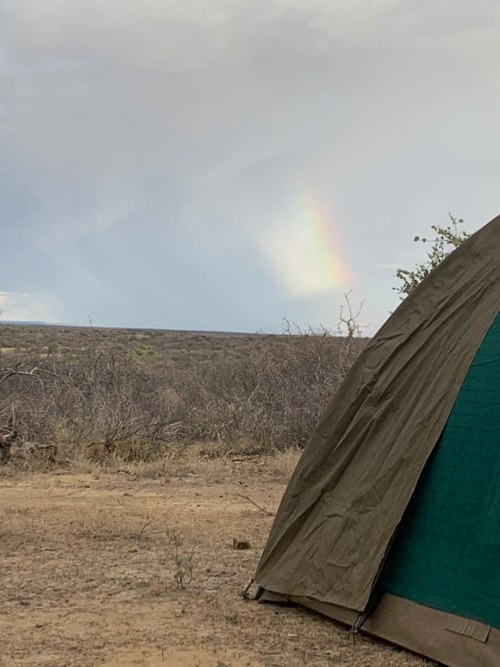
On our way to Koobi Fora, we made a pit stop at the fossil elephant site which houses the skeleton of an extinct Elephas recki. The fossil lies in situ in silty-like sediments that have been dated to about 2 mya. Later on, we headed to our campsite at the Koobi Fora Museum where we settled in our tents already pitched by the diligent TBI staff. We spent the evening swimming at the lake overlooking the picturesque view of the sunset.
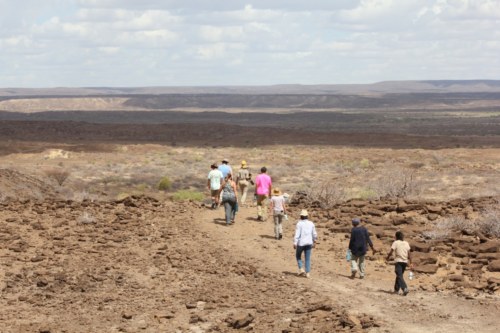
Walking to the elephant site. Photo credit: Acacia Leakey
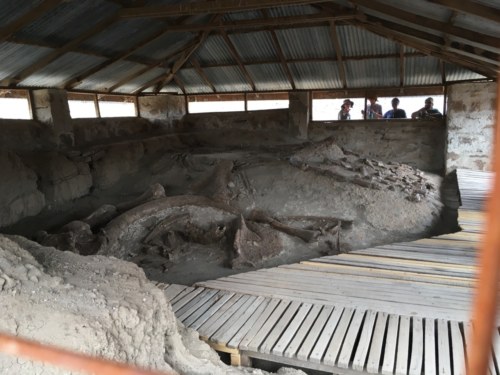
The fossil elephant site Photo credit: Acacia Leakey
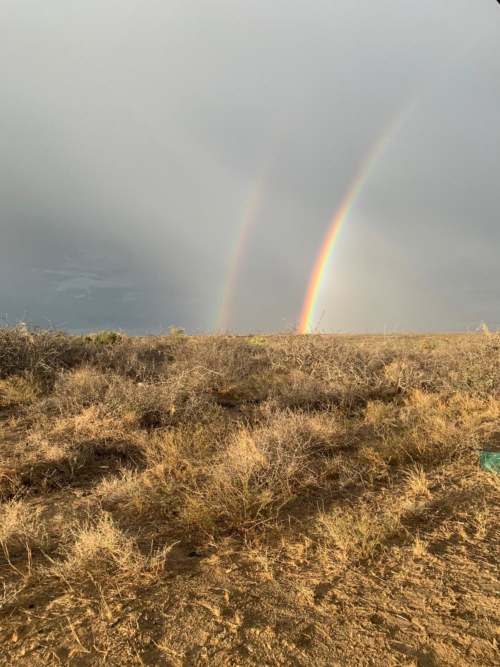
A beautiful rainbow at Koobi Fora. Photo credit: Hillary Babalola
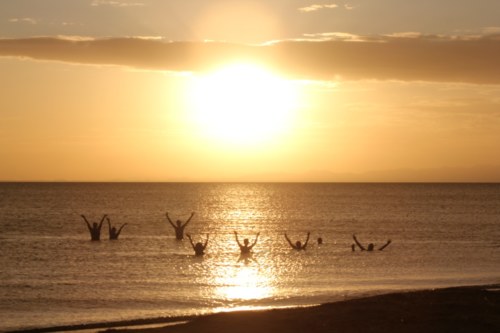
Magnificent sunset! Photo credit: Acacia Leakey
We rested for the night, and the next day we were up and running to explore Area 103 and 102; these are Plio-Pleistocene deposits, prolific homes to bioclastic sandstones, mudstones and many mammalian fossils. The presence of Etheria/Nile oysters in Area 103 signifies periodic water outflows or perennial paleo-river systems. Molluscan sandstone in Area 102 represents littoral lacustrine environment. The geology of the region is also characterized by internal beddings, high sedimentation, and big plumes. According to Dr. Henkes, describing facies enables Geologists and Paleontologists to understand many of the processes that would have caused sedimentation, the appearance, and the disappearance of different mammals in the fossil record.
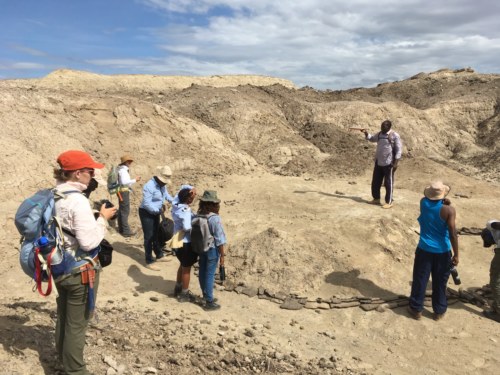
Cyprian Nyete explains to students about the archaeological and paleontological activities carried out in Area 102. Photo credit: Acacia Leakey
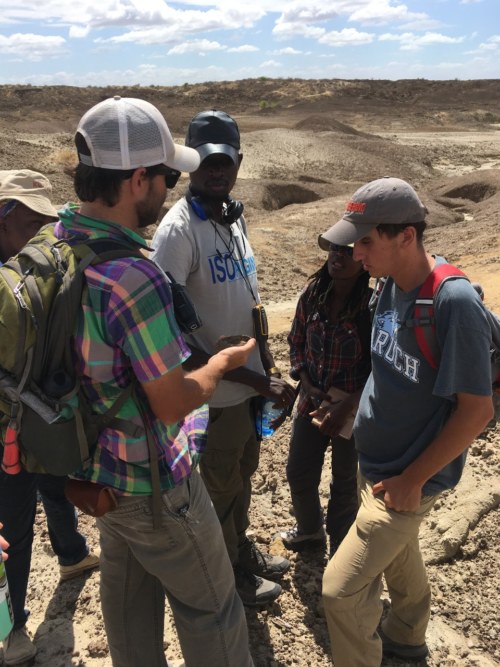
Dr. Henkes shows students the Nile Oyster fossil. Photo credit: Acacia Leakey
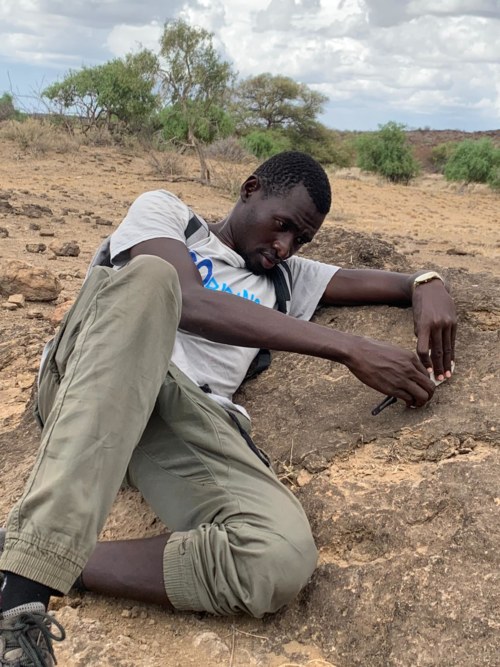
Emmanuel measuring the dip and strike of sandstone beds in Area 102. Photo credit: Acacia Leakey.
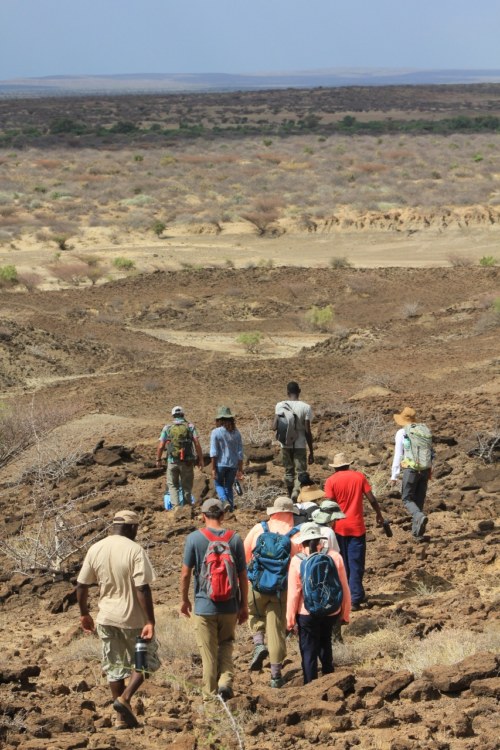
Walking in Area 102. Photo credit: Acacia Leakey
While relaxing near one of the KBS tuffs in Area 102, Dr. Henkes explained more about how dating of volcanic glass in the tuffs has eased cross-correlation in the geological and fossil record. For instance, the Tulu Bor tuff in the Koobi Fora Formation that dates to about 3.4mya correlates with the Sidi Hakoma tuff in the Omo of Ethiopia.
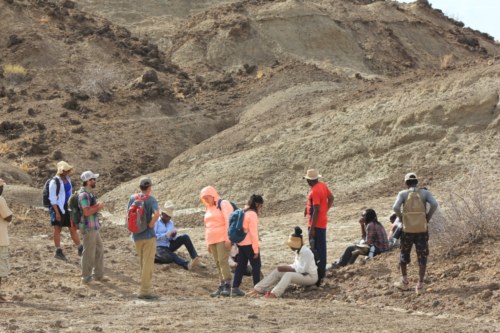
Dr. Henkes explains the geochemistry of tuffs.
Photo credit: Acacia Leakey
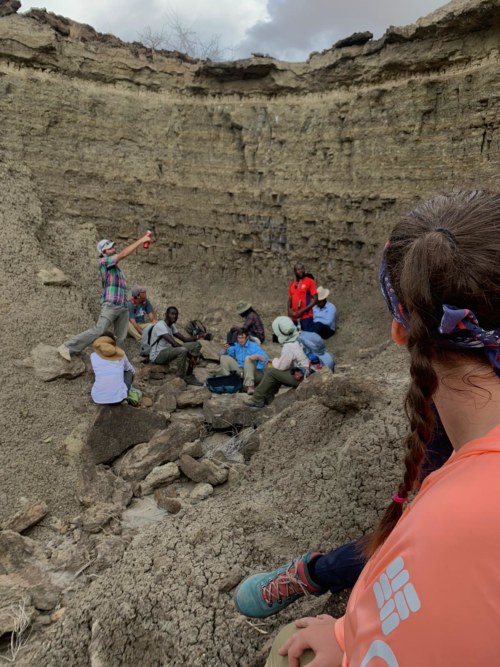
Dr. Henkes showing the students mudstones and the Lorenyang tuff in the Upper Burgi Member. Photo credit: Hillary Babalola
A stop at the Kokoi Ridge on our way back to Ileret had the students learn about the impact of tectonics in landscaping. Kokoi Ridge is a horst that sits between two grabens as a result of faulting in the region.
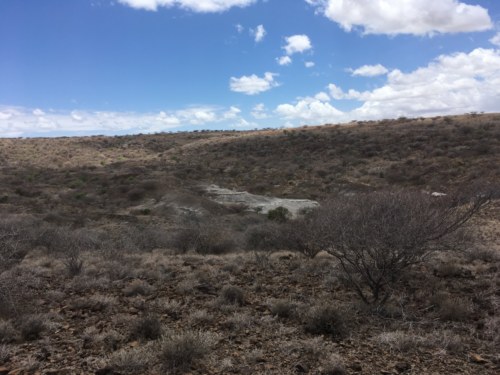
A view of the Kokoi Ridge. Photo credit: Acacia Leakey
The students sat for their Geology exams on Saturday and are now ready for the next module.
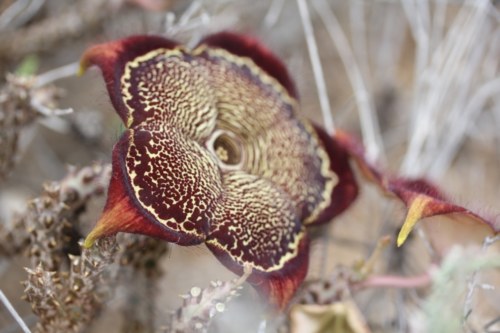
Edithcola grandis flower at the TBI Ileret campus. Photo credit: Acacia Leakey.
Stay tuned for more updates on Vertebrate Paleontology!





